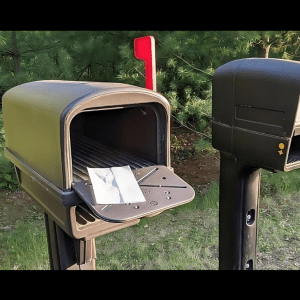Ever wondered why some ice cubes look like crystal-clear glass, while others resemble milky, cloudy blocks? The difference between clear and cloudy ice is more than just an aesthetic feature—it’s a fascinating result of the type of water you use and the freezing process itself. Let’s dive into the science behind what makes some ice cubes crystal clear and others a bit murky.
Why Does Ice Become Cloudy?

The culprit behind cloudy ice is usually impurities in the water. When you make ice with regular tap water, you’re also freezing all the tiny particles and dissolved gases present in it. Tap water contains various minerals, including calcium, magnesium, lime, and even small amounts of organic material. While these are generally safe to drink, they affect how the water freezes.
During the freezing process, the ice forms from the outside in, pushing these impurities to the center of the cube. This leads to a cloudy, white appearance in the middle, where the impurities and trapped air bubbles gather. Since pure, clean water freezes first, the clearer the water, the clearer the ice.
The Role of Freezing Technique in Ice Clarity
How you freeze water can also impact the clarity of your ice cubes. Ice freezes from the outside toward the center, causing impurities to collect in the middle as the ice solidifies. However, there’s a method called “directional freezing” that can produce crystal-clear ice. This technique encourages the ice to freeze in a single direction, usually from the top down or bottom up, which pushes impurities and air bubbles out as the water freezes.
Professional bartenders often use directional freezing to achieve beautiful, clear ice for cocktails. This method typically involves freezing the water in an insulated container so that it freezes from one direction, allowing gases and minerals to escape rather than getting trapped within the ice.
How to Make Clear Ice at Home: Simple Methods
If you’re looking to make clear ice at home, you don’t need fancy equipment. Here are some simple methods you can try:
- Boil the Water Before Freezing: Boiling the water helps remove some of the dissolved gases and impurities that cause cloudiness. For even better results, boil the water twice. Allow it to cool after each boil, and then pour it into your ice tray for freezing.
- Use Purified or Distilled Water: Purified water has far fewer impurities than tap water, which makes it ideal for clear ice. Distilled water works best because it’s even more refined, having gone through a process to remove most of its mineral content. Simply pour distilled water into your ice tray and freeze.
- Try a Cooler for Directional Freezing: If you have a small insulated cooler, fill it with water and place it in the freezer with the lid off. The cooler will slow down the freezing process, allowing the ice to freeze from the top down. Once frozen, you can remove the top layer of clear ice and discard the remaining cloudy portion.
These simple tricks can help you achieve clearer ice at home without the need for special equipment. However, even with boiled or purified water, you may still encounter a bit of cloudiness depending on your freezer environment.
The Science of Clear Ice: Removing Impurities and Air Bubbles

The clarity of ice depends on two main factors: purity of water and air content. When you use distilled or purified water, you minimize the number of impurities in the ice, which reduces cloudiness. But there’s still the issue of dissolved gases. When water freezes, these gases are pushed into the center of the cube, causing small bubbles that add to the cloudiness.
By boiling water, you release some of these gases, which results in fewer air bubbles and a clearer cube. Directional freezing takes this a step further by giving gases and impurities an escape route, so they don’t get trapped inside. That’s why ice made with distilled or boiled water in combination with directional freezing will often look clear as glass.
Does Clear Ice Actually Matter?
Beyond its visually appealing, glass-like quality, clear ice has a practical benefit: it melts more slowly than cloudy ice. Because cloudy ice contains air pockets and impurities, it tends to melt faster, diluting drinks more quickly. This is why bars and high-end restaurants often use clear ice in cocktails. It keeps the drink cooler for longer without watering it down as much.

Clear ice is also a sign of higher quality water. For those who enjoy cocktails or other beverages on the rocks, using clear ice can enhance the drinking experience. The slower melting rate and absence of impurities allow you to savor your drink without losing its intended flavor.
Comparing Clear Ice with Cloudy Ice: What’s the Difference?
- Appearance: Clear ice looks sleek and elegant, perfect for cocktails or presentations. Cloudy ice, with its milky center, looks less refined but works just fine for everyday use.
- Freezing Time: Clear ice often takes longer to make, especially with directional freezing, as it requires slower freezing to push out impurities. Cloudy ice is quick and easy to make by simply filling an ice tray with tap water and freezing it.
- Melting Rate: Clear ice melts more slowly because it’s denser and free of air pockets, while cloudy ice melts faster due to its trapped air bubbles.
- Taste Impact: Since cloudy ice contains impurities, it can sometimes alter the taste of your drink slightly. Clear ice, made from purified water, won’t interfere with flavors, making it ideal for drinks where taste is paramount.
Can You Achieve Crystal-Clear Ice Without Special Equipment?

Yes, you can! By following the methods above—boiling water, using distilled water, and employing directional freezing in an insulated container—you can get surprisingly clear ice at home. Although it might not be perfect every time, these techniques significantly reduce cloudiness compared to standard tap water ice cubes.
Clear ice might be considered a luxury for some, but it’s accessible if you’re willing to put in a bit of extra effort. And for those who love the finer details, this small adjustment in your ice-making routine can make a noticeable difference in your beverages.
Conclusion: The Fascination of Ice Clarity
The difference between clear and cloudy ice is more than just a visual curiosity—it’s a testament to the science of water quality and freezing techniques. Clear ice, often seen in upscale bars, doesn’t just look cool (pun intended); it also melts more slowly and keeps drinks undiluted for longer. So next time you reach for an ice cube, take a moment to notice its clarity. With a few simple steps, you can create beautiful, clear ice at home, elevating everything from your cocktails to your iced coffee. Cheers to crystal-clear ice!


